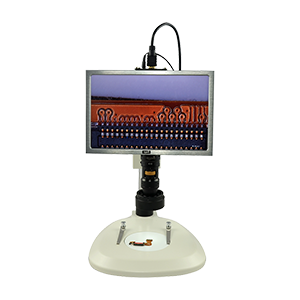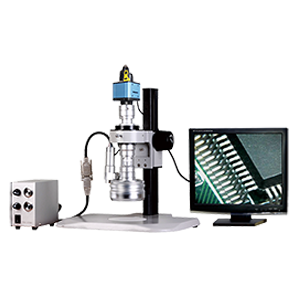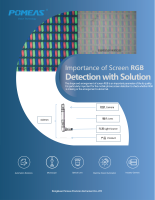How to Calculate the Amplification Ratio of Video Microscope (with Calculating Method and Formula)
The actual magnification of a video microscope is determined by the magnification of the objective and the digital magnification.
Total magnification = objective magnification * digital magnification
Magnification factor of objective = magnification factor of large objective * lens magnification factor
The formula for calculating the magnification of a microscope is as follows:
The magnification factor of the microscope = the magnification factor of the objective lens * (the diagonal line of the computer screen / the size of the target surface of the CCD or cmos) = the total magnification factor.

For example, the total magnification of a video microscope with a 10 x objective 15 inch display plus a 1/3 inch CCD or CMOS is 10 times that of an objective (15 inches x 25.4/target Size 6 mm)=635 times.
Target size is the diagonal size of CCD or COMS. Common CCD or COMS have 1, 2/3, 1/2, 1/3, 1/4 inches.
The actual size is as follows:
1 inch-target size is 12.7 mm wide * 9.6 mm high and 16 mm diagonal length.
2/3 inch-target size is 8.8 mm wide * 6.6 mm high and 11 mm diagonal length.
1/2 inch-target size is 6.4 mm wide * 4.8 mm high and 8 mm diagonal length.
1/3 inch-target size is 4.8 mm wide * 3.6 mm high and 6 mm diagonal length.
1/4 inch-target size is 3.2 mm wide * 2.4 mm high and 4 mm diagonal length.
1 inch = 25.4 mm
The image observed under the optical microscope is only the plane image of the structure, so the magnification factor is that the length or width of the structure enlarges the corresponding multiple, not that the volume of the object enlarges the corresponding multiple, nor that the surface area of the object enlarges the corresponding multiple, let alone that the area of the image enlarges the corresponding multiple.
Product recommendation
TECHNICAL SOLUTION
MORE+You may also be interested in the following information
FREE CONSULTING SERVICE
Let’s help you to find the right solution for your project!









 ASK POMEAS
ASK POMEAS  PRICE INQUIRY
PRICE INQUIRY  REQUEST DEMO/TEST
REQUEST DEMO/TEST  FREE TRIAL UNIT
FREE TRIAL UNIT  ACCURATE SELECTION
ACCURATE SELECTION  ADDRESS
ADDRESS Tel:+ 86-0769-2266 0867
Tel:+ 86-0769-2266 0867 Fax:+ 86-0769-2266 0867
Fax:+ 86-0769-2266 0867 E-mail:marketing@pomeas.com
E-mail:marketing@pomeas.com
